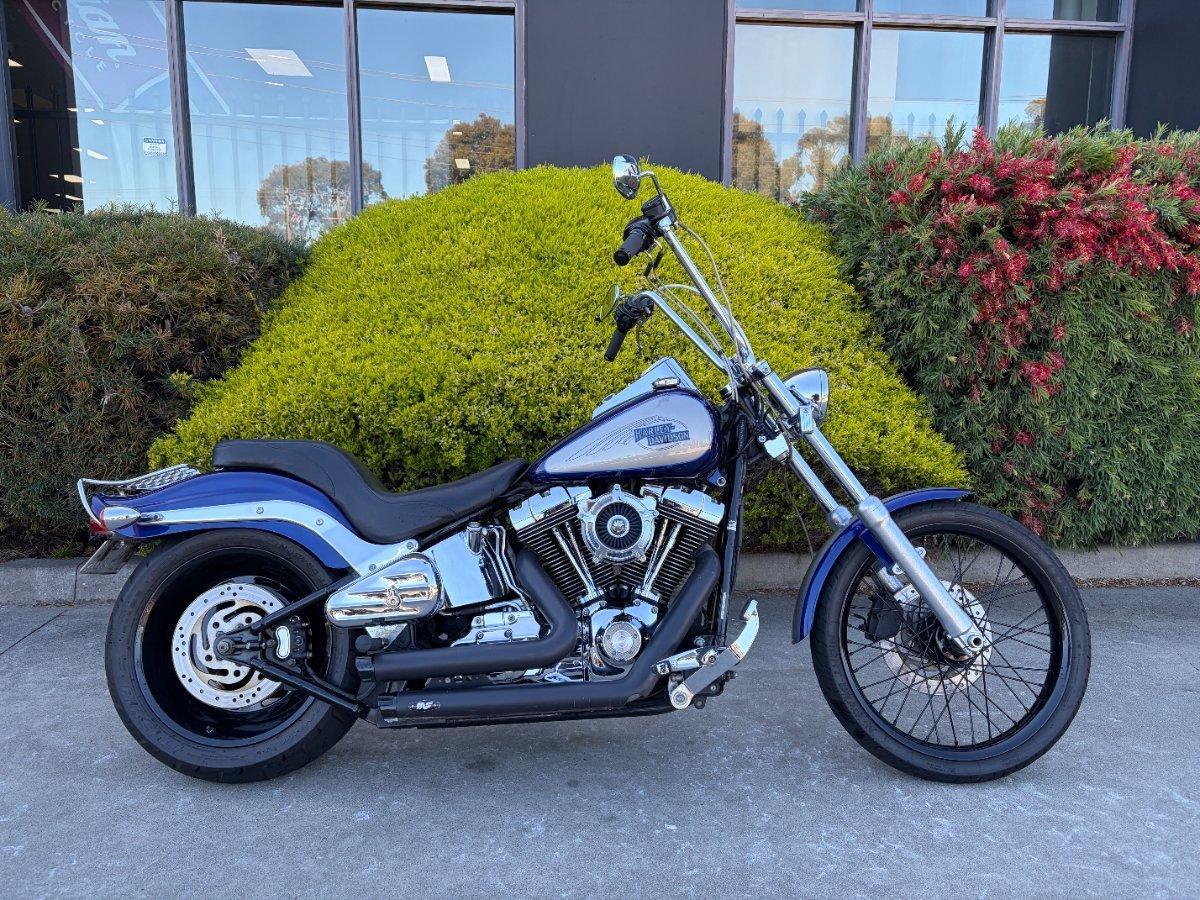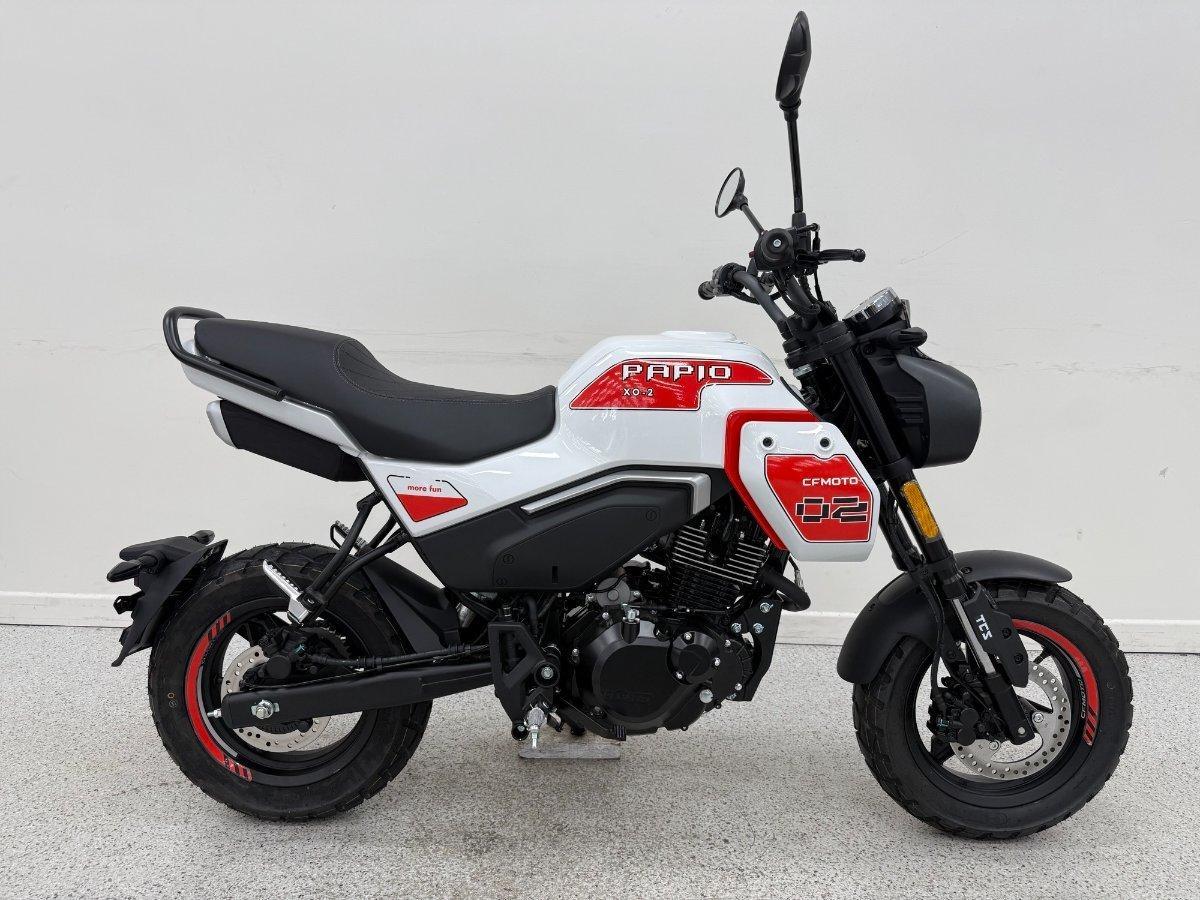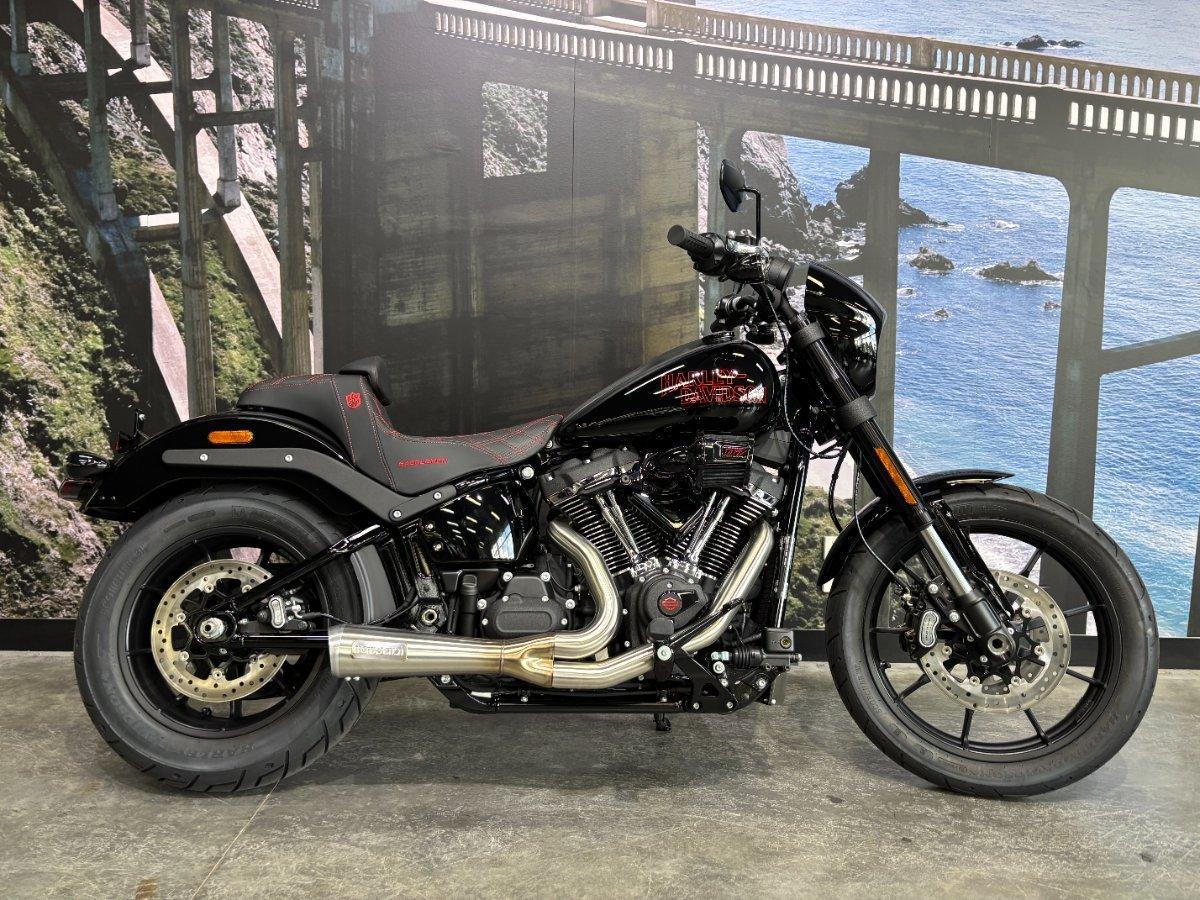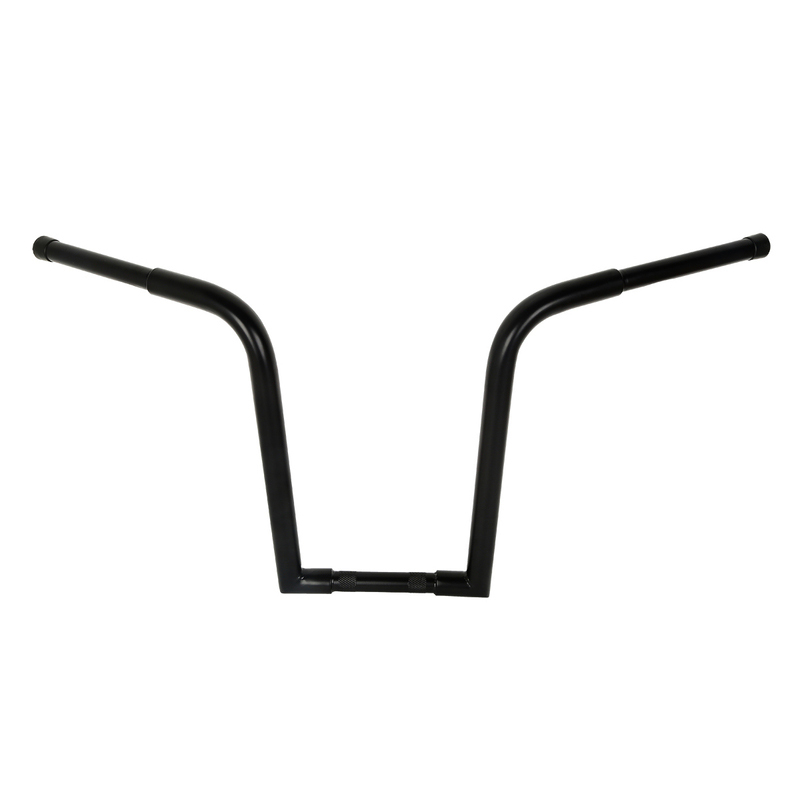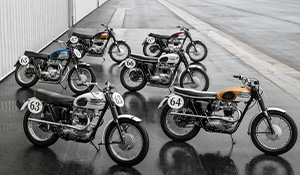2024 Royal Enfield Interceptor 650 and Continental GT 650
Words: Marc Cuming
Photos: Courtesy of Urban Moto Imports
Time flies when you’re having fun. Moreso when you’re having fun on a motorcycle. Still, it’s hard to believe almost five years have passed since Royal Enfield’s 650 twins landed on our shores. A Super Meteor 650 cruiser has been added to the range since then and the Shotgun 650 bobber is rumoured for a release sometime in 2024, but the original Interceptor 650 and Continental GT 650 twins from 2019 have remained virtually unchanged – until now.

Full credit to Royal Enfield’s Australian distributors, Urban Moto Imports (UMI), for utilising any opportunity to get their bikes in the hands of the motorcycling media. Not that we need much arm twisting! The occasion this time was the launch of the 2024 Royal Enfield Interceptor 650 and Continental GT 650.
Normally, Phil Suriano would be behind the handlebars for a media event like this, but he drafted me in for this one. I'm a Senior Financial Advisor for Shaw and Partners in my day job, and like Phil, I have a passion for big bikes (he runs a BMW GS and my regular ride is a KTM 1290), but we both appreciate the charms of smaller capacity models, too.
My Royal Enfield experience includes testing the Meteor 350 cruiser back in 2021 and having use of a Continental GT 650 more recently. As such, I was keen to see what was on offer for the new versions of both the Continental GT 650 and the Interceptor 650 that UMI rolled out for us in November.

I use the word “new” advisedly, as while variants of the Continental and Interceptor were released back in September, followed by fresh colour options for the Interceptor 650 in November, both models are fundamentally unchanged from their 2019 Australian debut.

Those new variants are the ‘Interceptor 650 Dark’ and ‘Continental 650 Dark’. As the name suggests, both have been given the blackout treatment on the engine, exhaust and wheels. Depending on the base colour scheme, the mudguards, headlight shell, mirrors and other areas get the dark touch, too. The Dark variants are also fitted with cast alloy wheels and tubeless tyres as standard, while the base 650 twins retain spoked rims and tubed tyres. Both wheel types are the same weight, apparently, so there’s no advantage in terms of handling or fuel economy, but obviously, there’s a greater convenience factor with tubeless tyres.

The Dark spec 650 twins also introduce an LED headlight, span-adjustable levers, a USB-A port, plus grips and switchgear from the Super Meteor 650. I’d expect some of these elements, especially the LED headlight and USB port, to transfer across to the regular Interceptor/Continental in time, but for now, they’re Dark exclusives and help explain the $700 premium these variants carry over the standard twins.

Familiar and New
Arriving at UMI’s HQ in inner suburban Melbourne, we were greeted with a mix of the new Dark variants and standard models in the new colours. For the Interceptor 650, the new colours are Cali Green and two-tone Black Pearl, while the Interceptor 650 Dark is available in Barcelona Blue or Black Ray. For the Continental GT 650 Dark, available colours are Slipstream (black and blue) and Apex Grey. I was on an Interceptor 650 in Black Pearl for the first section of the ride, then a Continental GT 650 in Slipstream for the return leg.
Additionally, some of the test bikes were fitted with Royal Enfield factory accessories, including soft panniers, a tinted flyscreen, bar-end mirrors and cosmetic parts. There are plenty more options in the range, from crash bars, a sump guard and heel guards, to a touring seat, pillion peg blanking plugs, master cylinder caps and oil filler caps, to name a few.

Having ridden a Continental GT 650 just recently, the control area for both bikes was familiar to me, made up of two large analogue gauges - speedo left, tacho right. An LCD insert in the speedo displays fuel level, odometer and two tripmeters, while the usual idiot lights are in the tacho. My only criticism with the instruments was the LCD information was hard to read with my aging eyes. Bigger would be better.
Bars, levers, pegs and pedals are mostly carryover for 2024, but as mentioned, the Dark variants gain the grips and switchgear from the Super Meteor 650. The USB-A port is tucked under the left-hand switchblock, allowing a phone or GPS device to be mounted nearby with a Quad Lock or similar bracket.
Looking over each bike, there are some nice touches, like the metal plate at the bottom of the flyscreen with a ‘Royal Enfield’ logo. The grips and footpeg inserts have similar Royal Enfield branding, with everything looking solid and well put together. Some people will continue to say it, but hoary old statements about Indian-made quality need to be knocked on the head. These bikes show that modern Royal Enfields are built to a standard that’s as good or better than their rivals.

Taking the Interceptor 650 off the sidestand, I noticed straightaway how heavy it felt. I’m solid enough to manhandle it, but a kerb weight of 217kg (slightly less for the Continental GT 650) will be significant for smaller/lighter riders. Similarly, the 805mm seat height will be a challenge for anyone under 5’8” (173cm), but I’m 6’3” (191cm), so could easily plant my feet on the ground when stationary.
Given Royal Enfield don’t offer cruise control, riding modes, traction control and the like, it may seem odd to say you get a lot of bike for your money with the new 650 twins, but it’s true. I love that there are no riding modes – it’s the very lack of tech that endears them to me. It’s like going back in time to old school motorcycling, but with modern, reliable running gear - the best of both worlds.
The Interceptor and Continental may not offer the latest bells and whistles, but they do offer is a LOT of character.

Coastal Cruise
For the media launch, UMI laid out a route that took us from their HQ at inner suburban Melbourne to Rosebud on the Mornington Peninsula, then across to Arthurs Seat before journeying back. It was arguably the ideal environment for these bikes – a good stretch of 80-100km running, some slower sections and a bit of inner city stop-and-go crawling, while the run up Arthurs Seat gave us a chance to explore the performance of the 650 twins on the twisties.
I have a soft spot for a twin, so I knew I’d like these bikes even before I rode them. Thumbing the starter produced a note from the dual pipes that, while it had me grinning, was a little too mild for my ears. I’d prefer something throatier, so the silencers would be the would be the first thing I’d change if this was my bike. The aftermarket has got this covered, so anyone who feels the way I do is catered for. The seat would the second thing I’d change, but more on that later.

On both the Interceptor 650 and Continental GT 650, the 648cc parallel twin produces maximums of 34.9kW (47hp) at 7150rpm and 52.3Nm at 5250rpm. These peaks haven’t changed since Phil rode both models nearly five years ago, but where they’re achieved in the rev range has. For example, torque maxes out much higher up in the rev range compared to a few years ago, while peak power is reached marginally higher. The incumbent 650 twins are now closer to the Super Meteor 650 in this regard.
The gearbox is still a six-speed, with chain final drive. When Phil rode the 650 twins in 2019, he cited the ease with which neutral can be found. That wasn’t my experience in 2023, as I had difficulty finding neutral several times when we parked up. Shifting through the gears was much smoother, though, aided by the standard slipper clutch. Another note with the transmission was the very tall sixth gear, meaning that even on the freeway, there was no need to shift up from fifth.

In the inner suburbs, the Interceptor 650 performed well at slow speeds and was narrow enough to easily weave through traffic – unlike a GS 1250, which can feel as wide as a car!
Beyond the shackles of the city was where these bikes really shone. You can easily sit on 100km/h with both, but I was told they'll do 160km/h (100mph), too. That wouldn’t surprise me, but I might need a big hill and a tail wind to actually hit “The Ton”. The air/oil-cooled engine is made for the open road, with its smooth response on flowing, winding roads putting a grin on my face each time I wound out the throttle.
Once at Arthurs Seat, we all thrashed our bikes up the steep, winding road to the summit. On the Interceptor 650, I could feel it governed at the red line - which is a good thing, as it was easy to back off and stay at peak power without blowing up the engine.
That 217kg weight I mentioned earlier is apparent when parking and manoeuvring at walking pace, but once you’re underway, it’s barely noticeable. Even less so when you’re at speed or cornering with enthusiasm.

A Confident Ride . . .
Some on the launch were critical of the CEAT rubber that’s now standard on the 650 Twins. Back in 2019, Pirellis were the standard tyres and I can’t help but think some riders would feel more comfortable on them. Regardless, I thought the CEATs were stable in the corners and couldn’t fault them. The tyres played a part in how solid the Interceptor felt overall and how nicely it hugged the road, but I put some of that down to the low centre of gravity, too.
The brakes are unchanged for 2024, consisting of Brembo offshoot ‘ByBre’ calipers on the single 320mm front disc and 240mm rear disc. Conditions on the media launch were dry and the weather mild, so the dual-channel ABS didn’t have to work hard. I thought the brakes were very responsive, especially when they needed to be. I’m sure LAMS riders will be happy with the braking, but I’d like to see two discs on the front end.

Suspension is made up of 41mm telescopic forks with 110mm of travel and twin rear shocks with external reservoirs offering 88mm travel. These are unchanged for 2024, with the incumbent twins missing out on the Super Meteor 650’s 43mm USD forks. Overall, I found the suspension to be soft, but perfectly adequate in absorbing the lumps and bumps on our roads. Like the brakes, it’s a set-up LAMS riders will be comfortable with, but I think the beefier USD front end would be a benefit for experienced riders like myself.
That being said, braking and suspension aligns with the Harris-designed frame to deliver the sort of handling performance that new and experienced riders alike are looking for. This combination certainly gave me confidence when riding. And while I’m not in the LAMS market, I think those properties are what newcomers are looking for, too. When a bike feels happy on the road, that transfers to the rider.

. . . But Not a Comfortable One
Compared to the Continental GT 650, with its clip-on bars that create a slightly more aggressive riding position, the ergonomics of the Interceptor 650 are well and truly upright, which should have made it more relaxed to ride. However, the seat was way too hard for me and became very uncomfortable over the course of the launch ride.
I wasn’t alone in this opinion on the day and I’ve seen other reviews citing the firmness of the seat, too, so Royal Enfield has some room for improvement in this area. I’m told the Interceptor 650 seat was recently updated, but based on my experience, it needs another update, specifically to be wider and softer.
The Continental GT 650 seat was a little more comfortable, but maybe that’s due to me being more familiar with it. Another note with the Continental is that those clip-ons lead to a stance that places your legs close to the twin’s heads. Not a problem when you’re at speed, but in stop-start traffic, the heat is noticeable and uncomfortable.

Made to Enjoy
My normal ride is a 160hp KTM 1290, so a 47hp Royal Enfield is obviously a step down, but it’s not a step back. I was having so much fun on the media launch, I thought to myself, ‘Do I really need all that power?’ But when I ripped the front wheel into the air on the big KTM, hitting 100km/h in just three seconds, I thought, ‘Maybe I do!’
As I said earlier, there’s not a lot that Royal Enfield has changed on the 650 twins since 2019, but that’s a reflection of how fit-for-purpose they’ve been from the beginning. Not much has changed because not much has needed to be changed. If Royal Enfield can address the seat issue on the Interceptor 650, it’ll make a great commuter - fast enough to get ahead of traffic and skinny enough to make lane splitting easy.
When I had that loaner Continental GT 650 a while back, I enjoyed it. I enjoyed my day on the 650 twins even more this time around. Once again, Royal Enfield has impressed me.

2024 Royal Enfield Interceptor 650 – Specifications (Continental GT 650 differences in brackets)
ENGINE
Type: SOHC four-stroke, eight-valve parallel twin
Displacement: 648cc
Bore x Stroke: 78mm x 67.8mm
Compression Ratio: 9.5:1
Engine Start: Electric
Ignition: Digital
Induction: EFi
Lubrication: Forced, wet sump
Cooling: Air/Oil
Max Power: 34.9kW @ 7150rpm
Max Torque: 52.3Nm @ 5150rpm

TRANSMISSION
Clutch: Wet, multi-plate slipper
Gearbox: Six-speed
Final Drive: Chain
CHASSIS
Frame: Tubular-steel, double cradle type
Front Suspension: 41mm fork, 110mm travel
Rear Suspension: Dual remote reservoir coil shocks, adjustable preload, 88mm travel
Fr Wheel: 18-inch spoked alloy, 18-inch cast alloy on Dark
Rr Wheel: 18-inch spoked alloy, 18-inch cast alloy on Dark
Fr Tyre: 100/90-18 CEAT M/C 56H
Rr Tyre: 130/70–18 CEAT M/C 63H
Front Brake: Single 320mm disc with two-piston caliper and ABS
Rear Brake: Single 240mm disc with single-piston caliper and ABS

DIMENSIONS
NOTE: Dimensions vary slightly on Interceptor 650 Dark and Continental GT 650 Dark
LxWxH: 2,122 x 789 x 1,165mm (2,119 x 745 x 1,067mm)
Wheelbase: 1,380mm (1,398mm)
Rake: 24 degrees
Trail: 106mm
Ground Clearance: 174mm
Seat height: 805mm (820mm)
Kerb Weight: 217kg (212kg)
Fuel Capacity: 13.7lt (12.5lt)
COLOURS
Canyon Red, Sunset Strip, Mark Two, Black Pearl, Cali Green for Interceptor 650. Barcelona Blue, Black Ray for Interceptor 650 Dark
(Rocker Red, Racing Green, Dux Deluxe, Ventura Storm, Mr Clean for Continental GT 650. Slipstream, Apex Grey for Continental GT 650 Dark)

LAMS APPROVED: Yes
PRICE: From $10,990 for Interceptor 650, from $11,690 for Interceptor 650 Dark (From $11,290 for Continental GT 650, from $11,790 for Continental GT 650 Dark)
WARRANTY: 3 Year / Unlimited kms, w/3 Year Roadside Assist


